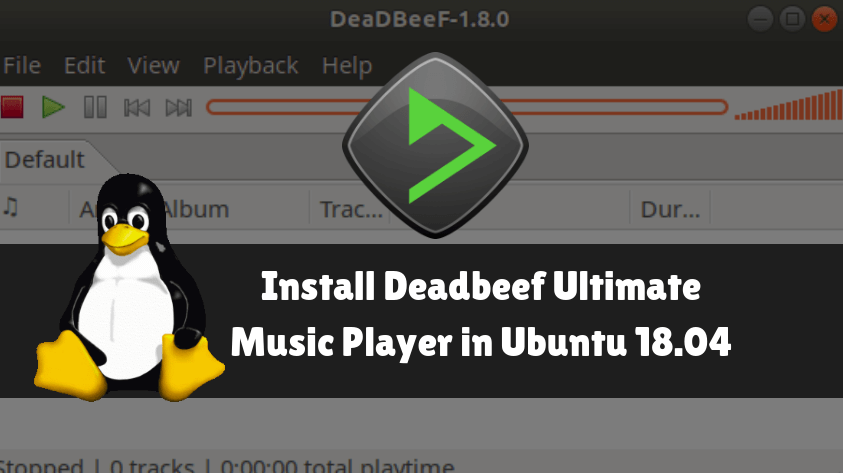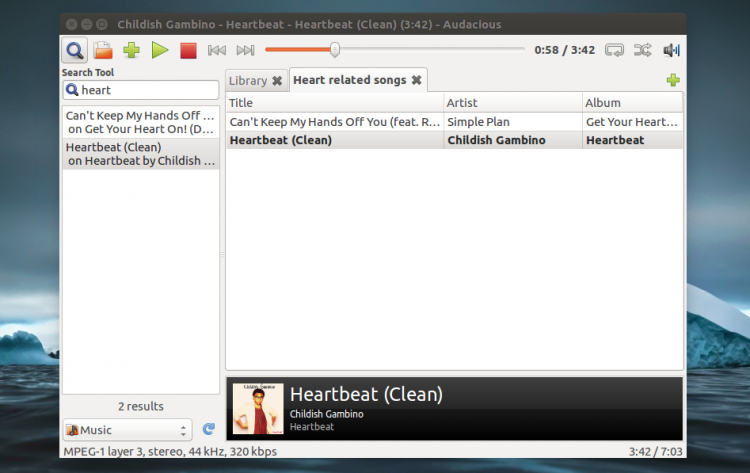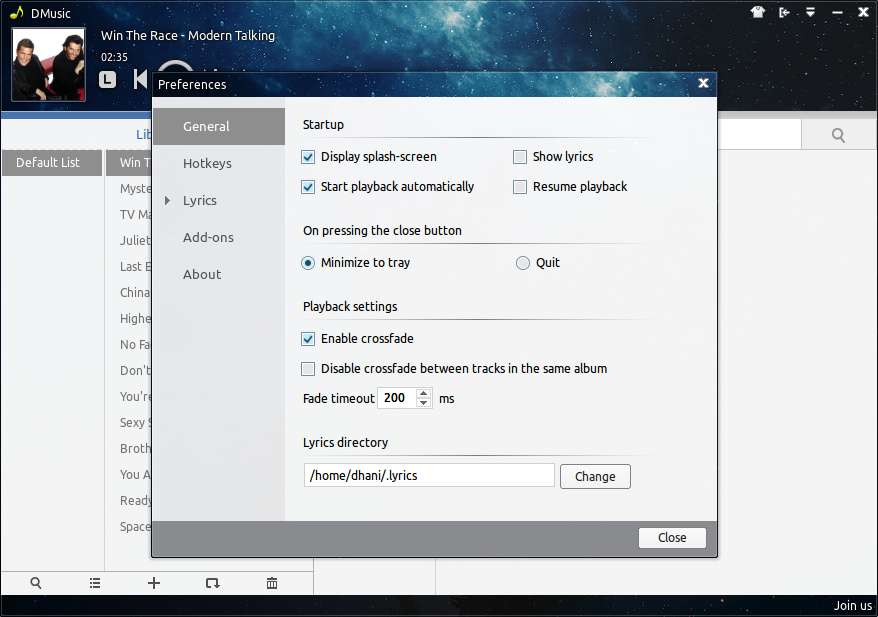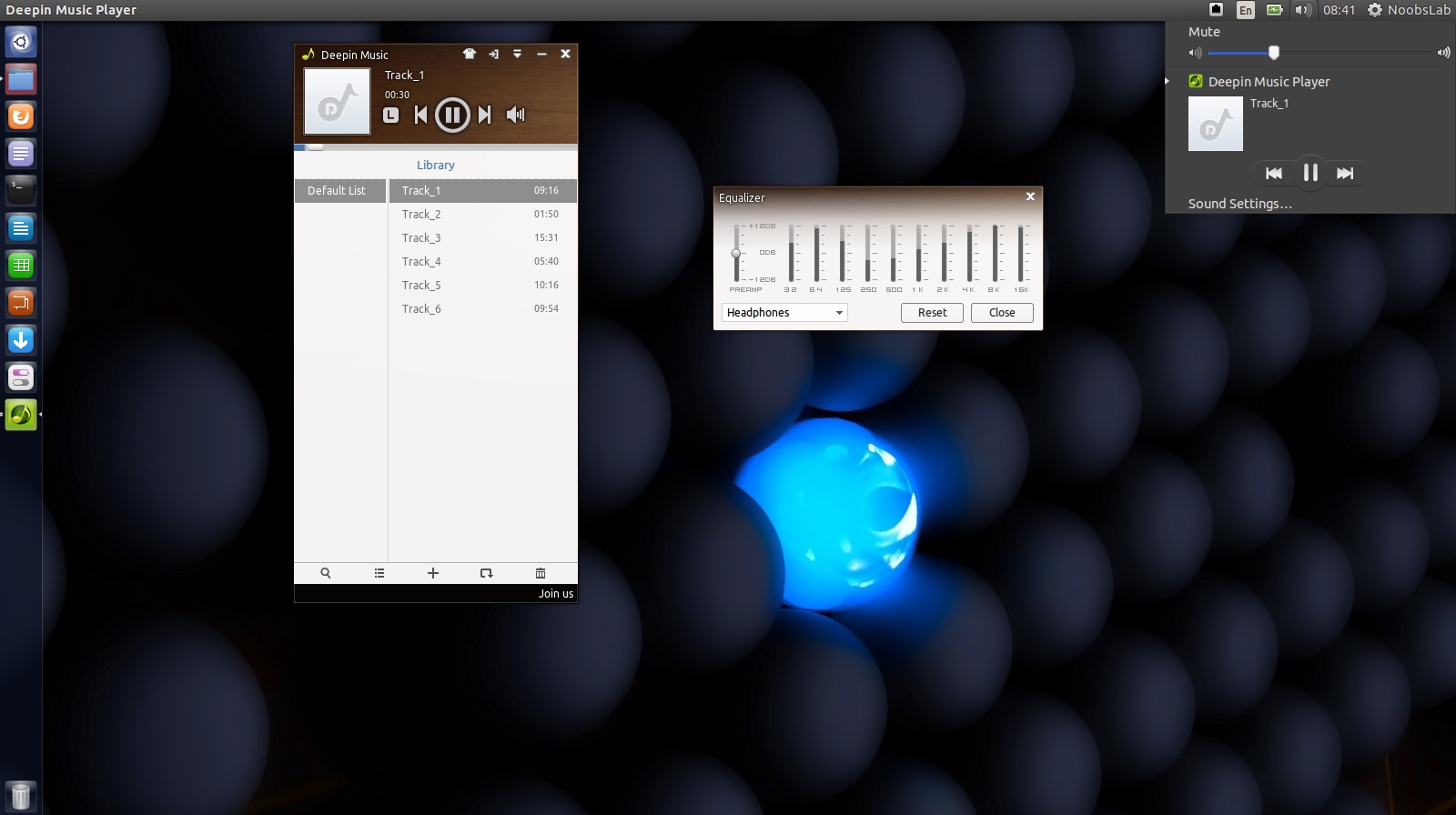

- #Ubuntu musicplayer mac os
- #Ubuntu musicplayer update
- #Ubuntu musicplayer android
- #Ubuntu musicplayer software

You can download Nuclear music player from its website. Also, Nuclear music player allows you to directly rip and download mp3s from YouTube with just a click.

You can add songs to a playlist and save it. First, select the music source by checking the entries on the top right, then use the search box to search the songs of your choice. Nuclear music player features a clean and simple user interface. It allows you to stream music from YouTube, Bandcamp, SoundCloud, and Vimeo. Nuclear music player is an Electron based application.

#Ubuntu musicplayer update
With local music, when you download new songs, you have to update your collection across all your devices. Most music streaming services do have web apps as well as mobile apps, so you can access your songs anywhere. It’s kinda unlimited storage capacity with streaming services. I mean, you don’t have to worry about storage. It lets you stream music from a number of sources such as YouTube, SoundCloud etc.Īlthough I do maintain a collection of good ol’ mp3 files on my PC, I don’t disagree with the advantages of streaming music.
#Ubuntu musicplayer mac os
There is no way to compile them on Mac OS with support for thisįormats or whatever :-(.Brief: We’ll have a look at Nuclear, one of the lesser known music players in Linux. When I was trying the precompiled packages the last time they where notĬompiled with support for mp3 and flac for licence reasons, because >You could use the pre-compiled binaries available from the 'squeezelite > can help and give some hints where to find the libs, etc.? > with support for mp3, ogg and flac is a pain because the needed libs
#Ubuntu musicplayer software
> I'd also to use squeezelite on a Mac Book, but compiling the software
#Ubuntu musicplayer android
I control the system wither via the LMS web app or one of the Android or iOS apps. I don't see why you couldn't set up squeezelite on the Ubuntu box. The advantage of piCorePlayer is that it runs entirely from RAM once booted, so you can turn it off by yanking the power cable. I use a Raspberry Pi with a headphone DAC as a separate headphone unit when I don't want to fire up the HiFi (I am a bit of an insomniac and frequently listen to music in the wee small hours). I hook the Rasperries up to LMS via WiFi, which in my house seems faultless. The headless player of choice for me is a Raspberry Pi running pCorePlayer (which uses Squeezelite), either with a HiFiBerry DAC (or similar) if connecting it straight to the amplifier, or via USB to a separate DAC. It runs 24/7 and located is next to the router, to which it is attached by ethernet cable. ThanksI run LMS on a QNAP NAS in a separate room from my HiFi, to minimise the sound of hard drives etc. In a perfect world, I'd like the Ubuntu server to show up as another squeezebox on my Squeezebox app on my phone that could be synced up with all my other boxes. I also have three squeezeboxes around the house. This server is running LMS 7.8 and is connected to my stereo. I am running an Ubuntu server as my central NAS. Some info about my setup if it is relevant. I'm really confused what is the current software of choice. Some say that development has stopped and has been replaces by some other package. I see several posts throughout the past couple years discussing softsqueeze, squeezeslave, squeezelite, and squeezeplay. I'm trying to figure out what is the current choice for headless music player.


 0 kommentar(er)
0 kommentar(er)
